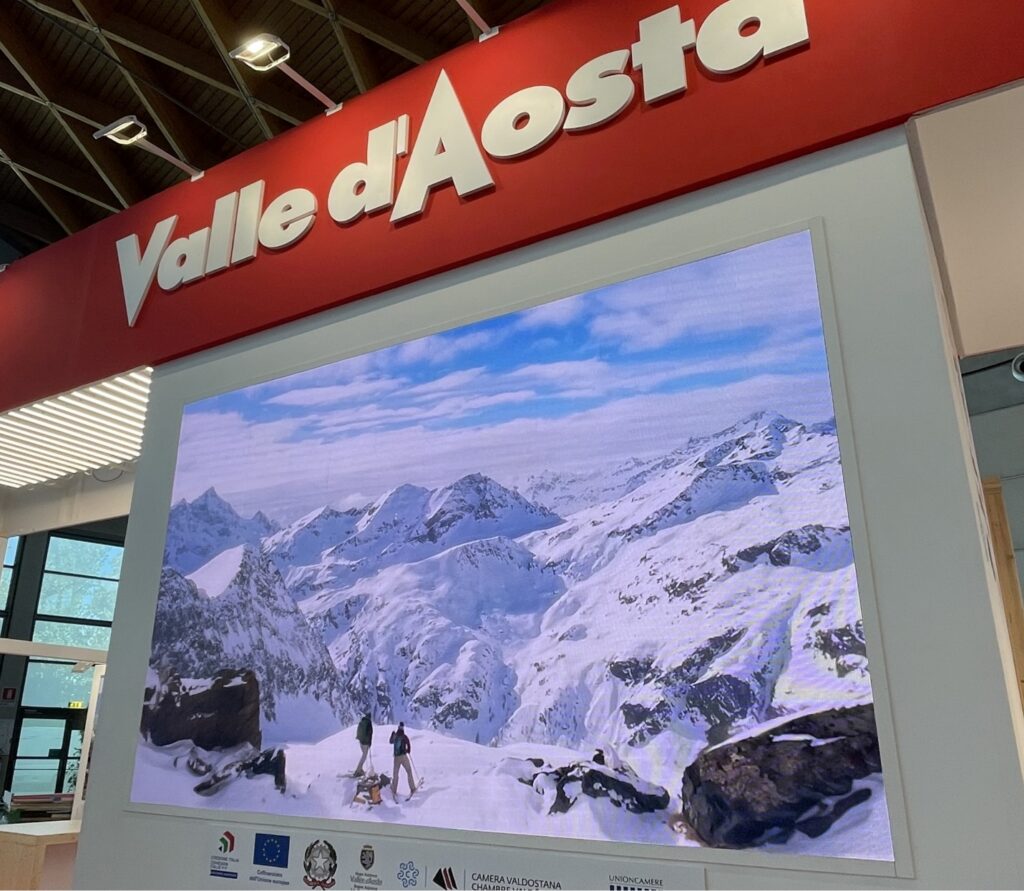Guidance on understanding pixel pitch and selecting the ideal resolution based on viewing distance and type of event.
In the world of trade show displays, ensuring effective visual impact is critical to attracting attention and communicating clearly. One of the key elements in achieving an optimal visual result with Ledwalls is the correct assessment of viewing distance. This parameter, closely related to pixel pitch, directly affects the perceived quality of the image and the readability of the content.
In this in-depth look at how to calculate the ideal viewing distance based on the type of Ledwall used and what are the best practices for an informed choice in trade show setups.
What is viewing distance in Ledwalls?
Viewing distance is the minimum distance at which a viewer can observe a Ledwall without perceiving the pixel grid. When this threshold is exceeded, the human eye begins to blend the bright dots into a continuous image, providing a sharp and comfortable view.
In trade show settings, where space is often limited and visitor flow is close, the choice of pixel pitch-and consequently viewing distance-becomes a strategic variable.

The role of pixel pitch in optimal vision
When choosing an LEDwall for rental use, one of the first parameters that is analyzed is the “pitch”(pixel pitch). The step immediately defines the class of LEDs used, and consequently the price and application context. So it is useful to ask what the current market benchmark is and why.
Pixel pitch represents the distance (in millimeters) between the centers of two adjacent pixels. The lower this value, the higher the pixel density per square meter and the better the resolution perceived up close.
A commonly adopted rule of thumb in the field is:
1 mm pixel pitch ≈ 1.5 meters minimum viewing distance
For example:
- A P2.6 / 2.9 mm. ledwall, the current standard in trade shows and events in medium to small spaces, offers good quality as early as 2.5-3 meters away.
- A P3.9 Ledwall is suitable for 3.5-4 meters.
- A P5.9 Ledwall requires at least 6 meters to provide a sharp image.
Of course, these are general guidelines: perceived image quality also depends on factors such as brightness, the type of content displayed, and the viewer’s eye.
Pixel Pitch and Ledwall Resolution
To complete the evaluation on the step to take, it is also worthwhile to be clear on how resolution is defined in Ledwalls.
Since the modules are fixed size and have a predefined number of pixels, the total resolution of a Ledwall will be defined by its size. The larger the screen, the higher its resolution will be. For the same size, the smaller the pitch, the higher the total resolution of the Ledwall will be.
How to choose the right pixel pitch according to the event
Events with close audiences (compact exhibition booths, demo areas)
Small and medium-sized stands where the viewing distance varies between 3 and 6 meters, an intermediate pixel pitch (2.9 or 2.6 mm) can be considered. This solution offers excellent visual quality and low cost, falling within the type of standard Led adopted in these contexts.
So opting for a pixel pitch of less than 3 mm rapproesenta suitable choice for a wide variety of events or booth sizes. In these cases, the audience is often in close proximity to the Ledwall. A P2.9 or P2.6 ensures perfect viewing without a “pixelated” effect.
Medium-sized spaces (open booths, central aisles of trade shows)
A pixel pitch between 3.9 mm and 4.8 mm may be the most balanced choice. It offers a good compromise between quality and cost, especially if the projected content is dynamic (video, animation, large text).
Remote installations (stages, elevated ledwalls, video wall areas)
Here a pixel pitch greater than 5 mm can be used, for example P5.9 or P6.2, reserving these models for situations where the viewer is more than 6-7 meters away.
Practical tips for trade show set-up
- Respect Aspect Ratio and Pixel Map. Led screens are always outside standard formats. Each screen has its own shape so the resolution varies from screen to screen. The supplier will provide a Pixel Map that will be used by the video maker to adapt the video to the screen resolution. Complying with this procedure is crucial to getting the highest quality from your Ledwall. Moreover, respecting these parameters allows you to obtain perfect quality output beyond the chosen pitch. From comparative tests, the difference between divine steps is practically irrelevant
- Study the booth floor plan: carefully consider from where the audience will look at the ledwall. Even a few meters difference can justify a different choice of pitch.
- Consider the height of the installation: a display placed high (e.g., above 2 meters) will be observed from a greater distance than one at floor level.
- Evaluate the content: small text or detailed graphics require lower pixel pitches; for dynamic, high-impact video content, a larger pitch is also possible.
- Simulate rendering at the design stage: when possible, use rendering tools or physical samples to evaluate the actual visual rendering based on the space.

Conclusion
Viewing distance is one of the most important technical parameters to consider when choosing a Ledwall for trade show events. Incorrect evaluation can limit the readability of content or lead to unnecessary costs in oversized technologies.
By properly analyzing the average distance of viewers and choosing the most appropriate pixel pitch, an effective visual result can be achieved, enhancing the booth set-up and ensuring a quality experience for visitors.
